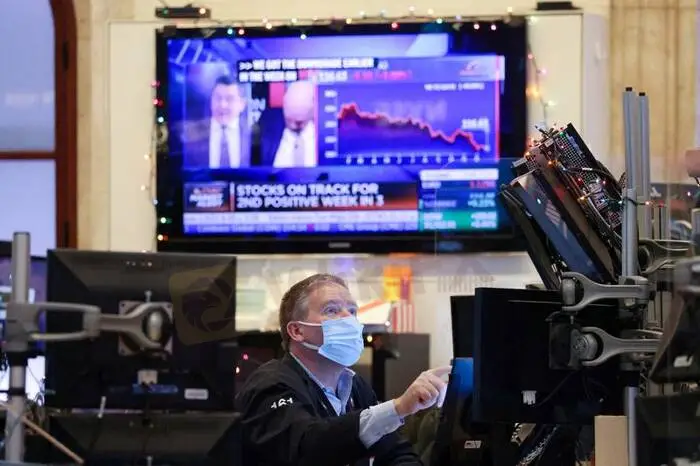简体中文
繁體中文
English
Pусский
日本語
ภาษาไทย
Tiếng Việt
Bahasa Indonesia
Español
हिन्दी
Filippiiniläinen
Français
Deutsch
Português
Türkçe
한국어
العربية
Marketmind: Buy the dip? Or pray for Fed put?
Abstract:Bears are on the prowl in markets while a different sort menaces Europes eastern flank.

A look at the day ahead from Sujata Rao.
Its probably futile to expect the Russian bear to retreat the way Wall Street bears did late on Monday, when sentiment turned on a dime, allowing the S&P 500 which was 4% in the red at one point, to close higher.
Clearly dip-buyers havent entirely fled equity markets. Or was it a function of all those short Nasdaq positions, which suddenly found themselves in the money?
The impulse hasnt carried through, with Asia deep in the red and Wall Street futures down almost 2%. Option market readings are not reassuring either; trading in put options, used to place bearish bets, outnumbered bullish call options by 1.1-to-1 on Monday, apparently the most bearish that ratio has been since March 2020.
Away from markets though, the global economic picture isnt looking too bad. PMIs advance readings on Monday did show an Omicron-driven slowdown in December business activity but signalled a peaking in supply chain delays. South Korean GDP expanded at the fastest pace in 11 years and of the U.S. companies that have reported Q4 earnings, 77% beat forecasts.
In the middle of this market churn, the Fed starts a two-day meeting which may well be the last before a March interest rate liftoff. Many hope it will pay attention to the tightening in financial conditions such large equity selloffs inevitably cause. JPMorgan cite the robust earnings season to argue the bearishness is overdone. And after all, they add “the worst-case scenario could see the return of the Fed put”.
Graphic: Nasdaq mktcap, https://fingfx.thomsonreuters.com/gfx/mkt/xmvjobazqpr/nasdaq%20mktcap.JPG Key developments that should provide more direction to markets on Tuesday:
-Singapore tightened monetary policy settings in its first out-of-cycle move in seven years
-South Koreas economy expanded at the fastest pace in 11 years in 2021
-Australias core inflation flew to its fastest annual pace since 2014 in the December quarter
-Credit Suisse warns of Q4 net loss
-Germany IFO survey
-Emerging markets: Hungary central bank
-U.S. consumer confidence January/
-U.S. 5 year Note auction ($55 bln)
-U.S. earnings: General Electric, Johnson & Johnson, 3M, Xerox, Invesco, American Express, Verizon, Microsoft, Capital One
European earnings: SEB, Remy Cointreau, Logitech, Ericsson

Disclaimer:
The views in this article only represent the author's personal views, and do not constitute investment advice on this platform. This platform does not guarantee the accuracy, completeness and timeliness of the information in the article, and will not be liable for any loss caused by the use of or reliance on the information in the article.
Read more

WikiEXPO 2025 is set to embark on a new global tour
WikiEXPO 2025 is set to embark on a new global tour First station - Hong Kong! Are you ready?

Will the Euro and US Dollar Reach Parity in 2025?
Euro-dollar parity sparks debate again as 2025 approaches, with multiple factors shaping the exchange rate outlook.

US Dollar Surge Dominates Forex Market
The global forex market continues to show volatility, with the U.S. dollar fluctuating last week but overall maintaining a strong upward trend. How long can this momentum last?

Oil Prices Soar for 5 Days: How Long Will It Last?
Last week, the global oil market saw a strong performance, with Brent crude and WTI crude prices rising by 2.4% and around 5% respectively. Oil prices have now posted five consecutive days of gains. But how long can this rally last?
WikiFX Broker
Latest News
90 Days, Rs.1800 Cr. Saved! MHA Reveals
The Yuan’s Struggle: How China Plans to Protect Its Economy
LiteForex Celebrates Its 20th Anniversary with a $1,000,000 Challenge
Misleading Bond Sales Practices: BMO Capital Markets Fined Again by SEC
Italy’s Largest Bank Intesa Sanpaolo Enters Cryptocurrency Market
What Every Trader Must Know in a Turbulent Market
Forex Price Trend Prediction! | Come be a New Year Price Winner!
HFM NY Special Offer!
How a Promised RM1.4 Million Return Turned into a Costly Scam
How Long Can the Dollar Remain Strong?
Currency Calculator






